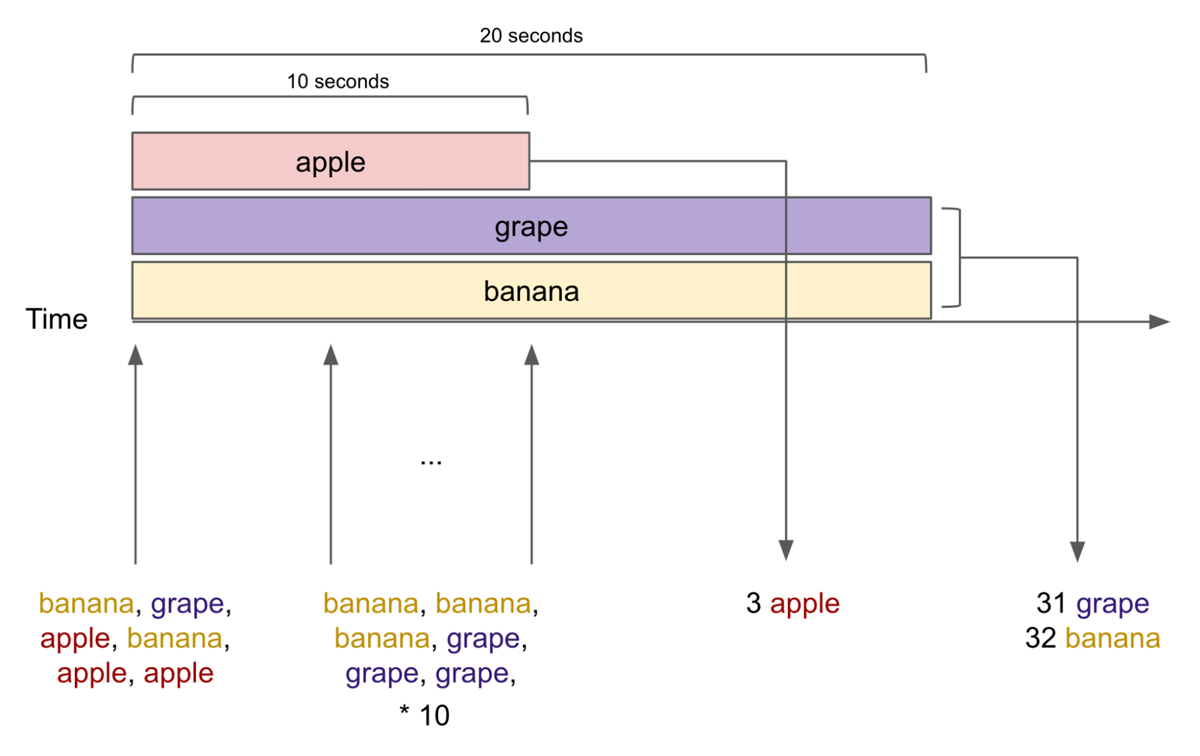Python Arbitrary Stateful Processing in Structured Streaming
How to execute a Python function with a state in Structured Streaming

More and more customers are using Databricks for their real-time analytics and machine learning workloads to meet the ever increasing demand of their businesses and customers. This is why we started Project Lightspeed, which aims to improve Structured Streaming in Apache Spark™ around latency, functionalities, ecosystem connectors, and ease of operations. With real-time stream processing, new data is constantly being generated and you need to process the data in a continuous manner. For example, tracking and counting the number of consecutive credit card transactions by a given user over a short window of time. To perform continuous processing, you often need to keep and then manipulate the intermediate results in a state store until the final results are computed. Structured Streaming provides arbitrary stateful operations to address such advanced processing needs but this capability has only been accessible to Scala users, until now.
Today we are introducing arbitrary stateful operation support in Structured Streaming with PySpark along with a code sample of a session window scenario. This unblocks a massive number of real-time analytics and machine learning use cases in Python in Spark. This functionality is available from Databricks Runtime 11.3 onwards and in the upcoming Apache Spark 3.4.0.
DataFrame.groupby.applyInPandasWithState
The user-facing PySpark API for arbitrary stateful operations is slightly different from its Scala counterpart. In Scala, the Dataset.groupByKey.mapGroupsWithState and Dataset.groupByKey.flatMapGroupsWithState methods support arbitrary stateful operations. Both methods are statically typed whereas the Python language uses dynamic typing instead, aligning with PySpark's DataFrame.groupby.applyInPandas API. In the presence of dynamic typing, PySpark state only supports storing a tuple that matches with the user-specified schema. Here is the API signature:
The signature of the user-provided Python function is as follows:
Users can invoke their own user-defined function that acquires or updates the state:
Session window word count scenario
This section walks through an example with an actual session window scenario that counts words. You can copy and paste the code snippets below into a Databricks notebook or the pyspark shell. Please feel free to try it out!
The example ingests words in text files in a streaming fashion and then prints the word and the number of words aggregated for the specified session timeout which defaults to ten seconds. The session state retains the words and counts and aggregates them until no more such words in the input exist for more than 10 seconds, then prints them out afterwards.

The streaming input in the example includes:
- The first input includes one grape, two bananas, and three apples.
- After that, the next inputs include three bananas and three grapes each second for a total of ten seconds.
Therefore, the console output becomes:
- After ten seconds, the word "apples" maps to a count of three because no apple was found for the last ten seconds.
- After twenty seconds, the word "grapes" maps to a count of 31 (1 + 3 * 10) and "bananas" to a count of 32 (2 + 3 * 10) because no bananas and grapes were found for the last ten seconds.
In this way, the "apple" session window lasts for ten seconds, and both the "grape" and the "banana" session windows last for twenty seconds.
Now, let's try the example scenario. Begin by importing the necessary Python classes and packages and creating an input directory words_dir:
In the next step, we define a query that reads and ingests all words in the text files inside the directory we created:
Then, we define the session window logic with DataFrame.groupby.applyInPandasWithState. Our user-specified function aggregates the counts for each word and then stores it into the session state. When each state reaches the timeout of ten seconds, it resets the state and then returns the result which is printed out to the console:
Now we provide the input to the query. It first writes one count of "grape", two counts of "banana", and three counts of "apple" to our session state. Then it writes three counts of "banana" and three counts of "grape" each second for a total of ten seconds:
The "apple" session window lasts for a total of ten seconds, and then the console shows a count of three for "apple" as aggregated during the session window. The session window for "apple" is finished at this point because there were no more instances of "apple" for the last ten seconds. In the case of our "grape" and "banana" window sessions, each lasts 20 seconds and the console prints 31 grapes and 32 bananas because there are instances of "grape" and "banana" for the first ten seconds.
This feature is available in Databricks Runtime 11.3, and in the upcoming Apache Spark 3.4.0. Please try out this new capability today on Databricks using DBR 11.3!

Never miss a Databricks post
What's next?

Data Engineering
August 26, 2024/15 min read
How to perform change data capture (CDC) from full table snapshots using Delta Live Tables

Solution Accelerators
September 4, 2024/8 min read